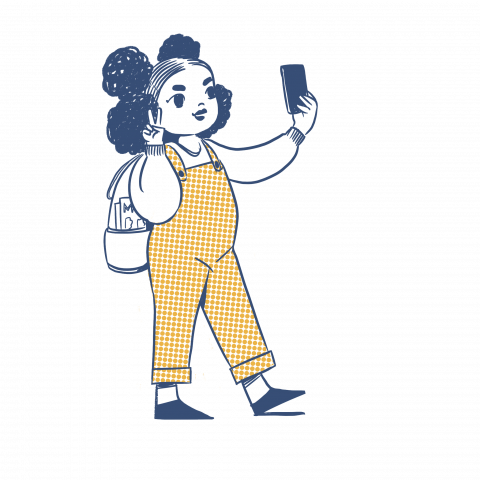Learning activity 2 – Academic level and expectations at secondary school
Students understand that the level of academic difficulty has been increasing each year they have been at school. However, the change to secondary school can prompt uneasiness in some students due to the uncertainty surrounding the academic change – and whether they will be able to rise to the challenge – and this can be stressful. On the other hand, some students look forward to an increase in academic expectation: for example, they may be excited about the new subjects and opportunities offered at their secondary school, or they may just feel that they’re ready for a new challenge.

The first two activities delve into the ‘unknown’ by showing students what academic work might look like in Year 7. It encourages them to discuss what they think is a reasonable expectation, and considers what they might do if they feel that expectations are too high or low. This is a key strategy for dispelling stress that comes from an unknown or uncertain situation – if students can see and discuss academic work from secondary school, it reduces fear of the academic unknown and places students in a better position to make choices about their own preparation for secondary school.
The academic comparison activities use student work published by ACARA that is benchmarked to Australian Curriculum standards. However, you may wish to use Year 7 work from your own (secondary) school, or from one of your students’ destination schools (if you are in a primary school). To collect these work examples, you will need to get in touch with the transition coordinator to identify and collect work – it may be that permission needs to be sought from the student(s) who created the work, and/or the work may need to be de-identified before use in your classroom. It is often useful to use this type of work, however, as students may feel more reassured if the example piece of work from a school they will actually attend.
Keep in mind that some schools have their assessment tasks publicly available on their website (for example, John Edmondson High School). Or, here is the link to the Australian Curriculum Work samples page, if you would like to choose student work examples from different learning areas.
The third activity reminds students of how assessment is a conversation in which they are a key player. While the activity is based around rubrics – and rubrics are used in many schools – the main concept is that, if students are to be assessed, there should be a clear and coherent way in which the assessment expectations are explicitly described and communicated to students. If your school does not use rubrics, you may need to adjust the classroom activity in order to adapt to or transfer the rubric’s concepts to your school’s assessment style.
If you are contacting ‘destination’ secondary schools to request examples of student work, it is worth asking at the same time if there are examples of assessment rubrics, or similar, that can be shown to prospective students. The discussion questions can be easily adapted to an alternative rubric.
Overall, discussion emerging from the activities should be centered on student agency and the key concept of ‘knowledge is power’. That is, if students can find out what classwork, homework, and assessment looks like in secondary school, they can make preparations for their own transition. The (Year 6) extension activity builds upon this notion.
Classroom activity – Academic expectations – is the linked resource for activities with your class.
If you have also done the New School Environment homework task where students trial their journey from home to school, some of them might like to present their findings and be “assessed” according to the oral presentation rubric. Of course, this might also lead to a discussion of how an assessment task might need to be longer and more complex for students to be able to show the ‘level 4’ competencies.
The classroom activities do not extend as far as ‘report cards’, as these tend to be highly specific to individual schools. However, a further extension activity, if you choose to do so, could include a conversation on how an assignment grade is combined with other grades over a period of time, and is then converted to a report card grade. An anonymised example of a report card and mark book might help support this discussion.
More information on report cards
South Australia: Written Reports for Primary and Secondary Students – Department for Education South Australia (PDF, 143KB)
NSW: Using A to E grades to report student achievement – NSW Government Education Standards Authority
NT: School reports – NT Government
ACT: ACT Student Reporting – ACT Education Directorate
Tasmania: Reporting – The Department of Education Tasmania
Western Australia: Reporting on student achievement – School Curriculum and Standards Authority – Government of Western Australia
Queensland: Guidelines for reporting – Queensland Curriculum and Assessment Authority (PDF, 893KB)